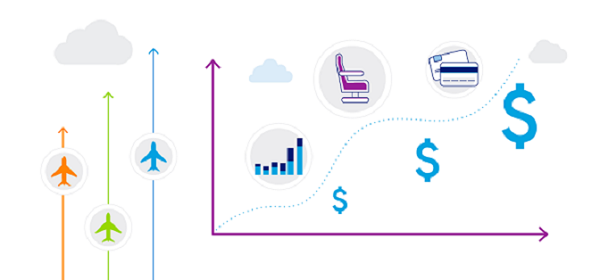
Nowadays, corporate executives recognize that analytics is pivotal for pricing teams to create solutions that enable them to achieve their firm’s pricing objectives.
In the B2B domain, ‘dynamic pricing’ is a critical approach to bring substantial benefits to companies.
- It enables them to predict when to raise prices to capture upside or reduce costs to avoid volume losses that eventually speed up their decision-making process.
- It considers various variables vital to determining a product’s desired price, such as demand, deal size, customer type, geography, competitors’ product price, product type, and many more.
With the appropriate set of technologies, advanced analytics, agile processes, and problem-solving skills, one can build a powerful dynamic pricing engine. During the design and development phase, the vendor(s) or internal team works closely with the pricing department to understand their objectives and get inputs on pricing solutions. After completion, price recommendations are passed on to the sales representatives. And the way they follow the recommendations determines the solution’s success.
Now, suppose a higher price is recommended for some customers, but the root cause is not explicit. In such a case, the sales representatives may be reluctant to use the recommendation for fear of losing sales.
The effectiveness of dynamic pricing depends on sales representatives

Although pricing instructions are available to the sales reps, for them, the dynamic pricing solution is still a black box. Quite rightly, if they do not understand the rationale behind the price fluctuation for specific products/solutions, how will they negotiate with customers?
Many pricing teams overlook this aspect, which impacts the effectiveness of pricing solutions. However, there are multiple ways to get salespeople to accept dynamic pricing. Here’s how:
- The team responsible for building new dynamic-pricing processes and tools needs to incorporate the sales team’s knowledge into the system.
- Throughout the decision cycle, the sales representatives should be treated as partners, and the sales managers should be involved in the solution building process.
- Once the solution is ready, the pricing team and sales managers must explain the rationale behind the new price recommendations.
- This way, the salespersons can justify the new price.
All of this requires collaboration and extra time, but it is worth the extra effort.

Besides, sales staff can also feed win and loss information back into the system to steadily improve the model’s accuracy and uncover new insights, thereby making Dynamic pricing self-reinforcing. This kind of involvement boosts their confidence in the solution and makes their experience countable. Moreover, incentive structures also need to be realigned so that sales reps are rewarded for following the recommendations. It means that agents will be compensated based on the recommended results generated by the pricing tool – Analytics can also help design this kind of Incentive Compensation.
A significant impact cannot come only from having a robust solution. The sales reps are equally crucial in enabling the last mile adoption of your dynamic pricing solution.






